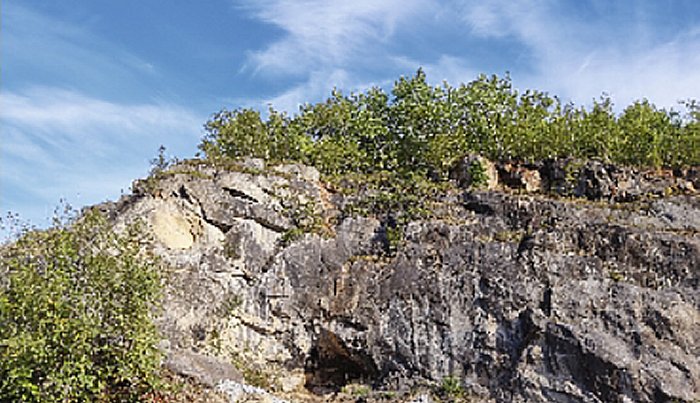Conny Waters - AncientPages.com - Through DNA analysis and examination of ancient animal remains, archaeologists, geologists, and biologists contributed with their expertise and have successfully pieced together the variety of wildlife that once inhabited a cave in Nordland, Norway.
The cave was completely unknown until 1993. Photo: EvoCave
Sanne Boessenkool, Professor at the Department of Biosciences, IBV said that the team found the bones of animals that we see moving northwards again nowadays due to a warmer climate.
The climate changes following the last ice age should not be used to downplay or dismiss the severity of the ongoing human-induced climate change, according to Sanne Boessenkool, adding that this this knowledge can help to better analyze how climate change will affect animal diversity in the future.
"We know that there was a warmer climate before, but we don't know much about what kind of animals lived here at that time. Now we have new knowledge about how wildlife changed when it got warmer, after the end of the last ice age," says Aurélie Boilard, Ph.D. candidate at IBV.
Photograph of the Nygrotta entrance (photo credit: T.K.L.)
The discoveries from the excavation at a unique cave in Nordland, located in the Narvik municipality, are impressive because the researchers have stumbled upon such rich deposits from this period in caves, and the immense quantity of bone remains preserved within the cave's sediments - it's definitely not your run-of-the-mill find.
The cave was discovered during a hillside excavation for a road construction project leading to the Norcem industrial site. The dig was spearheaded by Trond Lødøen, an Associate Professor at the University Museum of Bergen.
"We have combined knowledge from osteology with DNA analyses of the bones. This has enabled us to reconstruct how animal diversity changed after the last ice age," says Boessenkool, an expert in ancient DNA and changes in biodiversity.
"But more than 90%, i.e., more than 2,000 bone fragments, could not be identified in this way. Many of the bones were too broken or damaged," says Samuel James Walker, postdoctoral researcher at IBV and one of the osteologists involved in the project.
Bones and DNA are particularly well preserved in caves. Here from the excavation in Nygrotta. Credit: EvoCave
An yet, the researchers found the way to identify the small bones and remains through a technique called DNA barcoding. By combining osteology and DNA analyses, the researchers were able to identify as many as 40 different animals that lived in the vicinity of Nygrotta 5,000 to 13,000 years ago.
Several impressive discoveries include deposits dated back 5,800 years, and as the team says "in this layer we see that the species that are adapted to the cold have moved on." he species include forest birds such as grouse and a genus of fish called Seriola (amberjacks), which is also now heading north again with a warming climate.
"We see that some of the species that are moving northwards today have been here before. We know that it was warmer in the past, but we don't have a full overview of which animal species existed this far north," said Boilard.
"In the deposits dating back 9,500 years, we found remains of freshwater fish. We don't know for sure how these fish migrated into Norway after the glaciers melted. But we see that freshwater fish arrive very early in the north, almost immediately after the ice disappeared," says Boilard.
In this sediment layer, the researchers also found land-dwelling animals such as bears, lemmings, hares and several small shrews. They also found seabirds and mussels.
The lowest and oldest sediment layer examined was 13,000 years old. At that time, the sea level was above the cave opening and the climate was colder than today. In this layer the researchers only found fish species that are adapted to cold conditions, such as cod and ling.
There are many caves in Nordland, but few have been investigated by researchers.
It took the researchers many months to analyze all the material from Nygrotta. They used sieves with very fine mesh to capture all the bones in the sediments.
"By combining osteology and DNA analyses, we have managed to form a fairly complete picture of the species that existed based on the bones we analyzed. Few studies go into such detail," says Boessenkool.
Written by Conny Waters - AncientPages.com Staff Writer








